By
Tom Christmann | 05/07/2019 | in
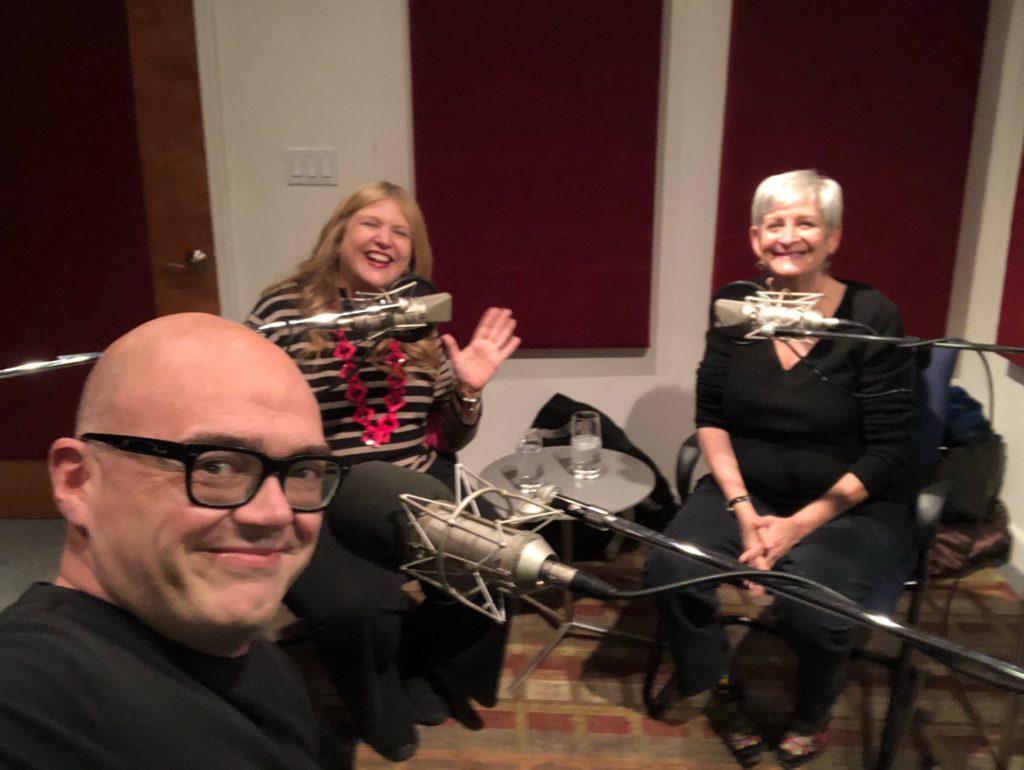
In the booth with Terri and Sandy (Season Two)
“Have you heard our podcast?”
Yes, we’ve become “that guy.” DiMassimo Goldstein has a podcast. No big deal. (Eyeroll emoji.) In all seriousness, we don’t actually talk about The A-List Podcast that much. Because we didn’t do it to make ourselves famous. We did it because we’re curious about creativity and we’re obsessed with starting conversations. Here’s how it happened:
My friend Lauren Slaff has an ad school called Adhouse. A couple of years ago, I noticed that her Facebook presence for the class needed an upgrade and offered to help. At DIGO, we talk a lot about Inspiring Action and resisting the urge to just make a straight-up ad hawking your wares, so of course my first thought was, “We need some hard-hitting print and banner ads!” It’s amazing how theories become so hard to follow in practice. Duh!
Yes, paid ads are important, but the first thing we needed to do was to get across the difference of Adhouse. As I say in every episode of The A-List Podcast, “[Adhouse’s] philosophy? An ad class is only as good as the professional who teaches it.” At Adhouse, you learn from the people who do the work in the very places where they do it. You literally go to the agency where your teacher works one night a week and show them your ideas. It’s the closest thing to breaking into the business you can get for six hundred bucks.
So a team worked on some ads. They were funny. But mostly they were ads. Clever headlines. Hard-hitting copy. Blah blah blah. And in the end, while they might get some people to notice Adhouse, they weren’t going to be great for the team’s book or for DiMassimo Goldstein. We’re an Inspiring Action agency. It says so in our lobby! We needed to innovate.

A reminder from our lobby at 220 E23rd Street. :)
That’s when we had a bigger idea: Let’s just interview some ad greats themselves, giving the audience a little taste of what it might be like to take an Adhouse class but also getting their ad stories. We eventually settled on their origin stories, partly out of not wanting the show to be too production-intensive week to week but also in an effort to keep it valuable to our core target audience: people who are curious about breaking into the ad industry. We originally planned to do films, but that didn’t pass the production-intensive test either. So we settled on a podcast. NOTE: At the time, we had never produced a podcast. But that’s part of Inspiring Action: Jump and a net will appear.
We began by emailing a few ad friends of mine. Rob Reilly, Ty Montague and Greg Hahn all said yes. Hooray! Gramercy Post, a sound studio upstairs in our building, offered up their recording facilities. We would patch in the guests, and I would ask them their life story. We would record an intro and an outro, slap some music on it, shove in an ad-read for Adhouse and see what we got. Podcast in an hour.
Before we could pull the trigger, I had to talk to my partners and Lauren (our client) about paying for it. As far as the agency was concerned, it wouldn’t make us much money. Make that (scribble scribble) zero dollars, actually. But we would be learning how to make and distribute podcasts, and we would be getting our name out to a young, creative audience. Also, I’d be connecting our agency marketing team to the PR departments of agencies ten or twenty times our size, who would all want to get the word out about their own creative geniuses. Oh, and we could do it pretty cheaply and with a very small team. They said yes (thanks, partners!) and Lauren was happy to try anything (thank the universe for good clients). So off we went.
That was over two years ago now. We have learned a lot along the way and, as we launch season three on May 9th with Anselmo Ramos of GUT, I am struck by how much has changed, but also what hasn’t. Our format hasn’t changed. We’re still asking the guests how they found this weird career we call advertising. (I’m still amazed I found it myself, to be honest. I still feel like that kid from Jersey with the weird hair.) We still record at Gramercy Post. But sometimes we have the guests sit down in the studio with me now. The experience is different that way. It’s easier to connect to the person but can also be scary. (You have to make eye contact and stuff!)
The guests are from new places. I used up all my close friends in season one and two. Now I am interviewing people I never thought would say yes, and I’m still amazed when they say they listen to and love the show. This season will include conversations with the aforementioned Anselmo Ramos as well as Ricardo Casal and Juan Javier Pena of David, Nick Law of Publicis and Karl Lieberman of Wieden + Kennedy. We’re doing a whole design exploratory starting with Paula Scher of Pentagram and Bobby C. Martin of Original Champions of Design.
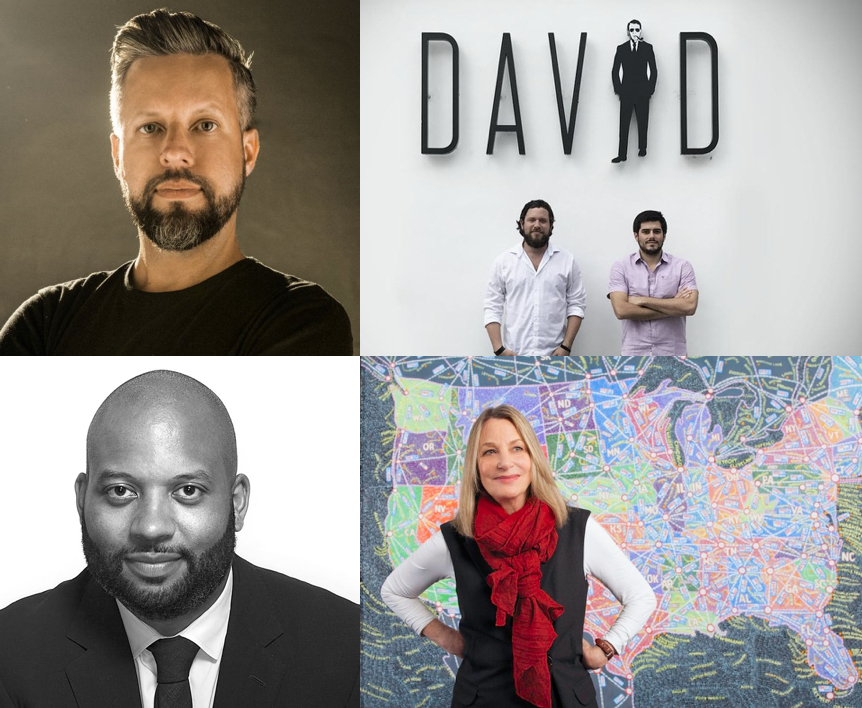
New Season. New Guests. (Clockwise from Top, Left: Anselmo Ramos of GUT, Ricardo Casal and Juan Javier Pena of David, Paula Scher of Pentagram and Bobby C. Martin Jr. of Original Champions of Design.
(By the way, we have toyed with doing a sub-pod about young people who just entered the business. (The A-List The Next Generation?) We’re still working on ironing out how to do that, which was an idea we got from some young listeners. But Casal and Pena from David and Dhruv Nanda from Oberland start us off with some new perspectives from the millennial point of view.)
One more difference in the show this year is the music. Ross Hopman, a friend of the agency at Duotone, loves the show and wanted to help out. We were thrilled of course. But we had no idea how great the results would be. In the end, we couldn’t choose one song, so The A-List Podcast might just be the only podcast out there with TWO theme songs. The one at the end is my personal favorite, based on an off-the-cuff joke to Ross: “If all else fails, just give me something like The Muppet Show theme.” God, I hope Kermit doesn’t sue.
It’s a funny thing about an Inspiring Action, but it almost always gives you more return than you bargained for. Our little podcast (with very little advertising to support it) has reached tens of thousands of people all over the world. We get notes and emails from listeners who have been in advertising for decades telling us how the show has reignited their passion for the business or kept them going during hard times. DiMassimo Goldstein has gotten clients asking us how to make podcasts and young creatives who want to work here. And, of course, Adhouse has never had so many applicants.

And so it is my pleasure to introduce you to more amazing ad people. That’s the moral of the story of The A-List Podcast by the way: It’s all about the people you meet along the way. This business is full of thousands of amazing people who get to solve problems for the world’s biggest brands in creative, unheard-of ways every day. They did this by finding people who were doing it and learning from them. Our goal was to get more people to imagine themselves doing the same and continue what the Lion King might call the Circle of Ad. Because whether you are a kid from New Jersey like me or a big brand who needs to reinvent yourself, creativity is the way. All you have to do is start a conversation with the right people.
Have we mentioned that season 3 of our podcast launches on Thursday? No big deal. 🙄
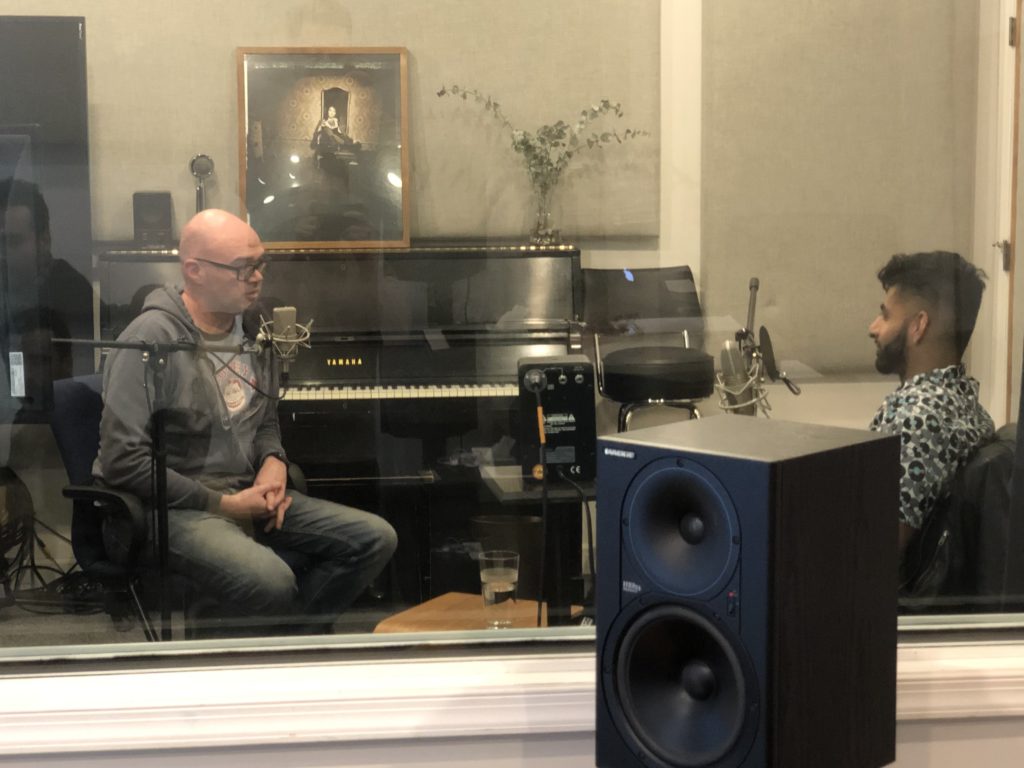
The old guy on the left is me. The cool guy on the right is Dhruv Nanda of Oberland.
By
Team DIGO | 03/15/2019 | in
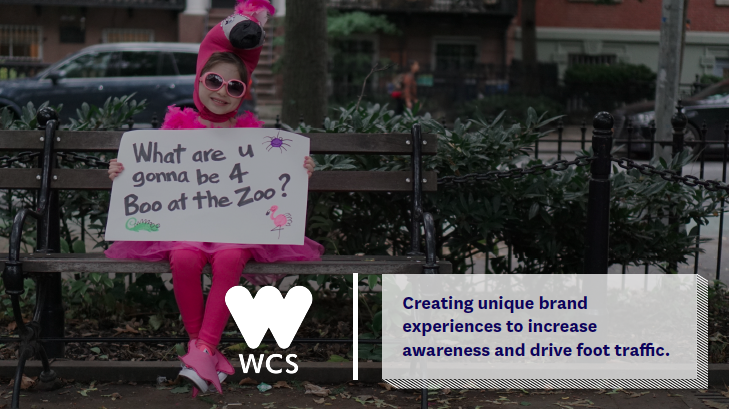
For over a century, The Bronx Zoo has been a cultural landmark in New York City. With over two million visitors a year, the world-renowned zoo has more than earned its reputation as one of the city’s must-see attractions.
But in the summer of 2017, the zoo wasn’t living up to its standard. Attendance was down, and with their annual Halloween event, “Boo at The Zoo,” right around the corner, that needed to change… and quickly.
That’s when they came to us to inspire action.
The Challenge
People love going to the Zoo, but only go once every few years. They assume that once you’ve been once, you’ve seen all that there is to see.
Of course, our client knew that assumption to be far from the truth… there’s always something new to experience at The Bronx Zoo – we just needed to make New Yorkers aware of that.
The Solution
Create memorable “must-come” events in every season to increase brand awareness and drive attendance while making The Bronx Zoo relevant to a whole new audience.
Our client needed to do the urgent fast and the important great, so we got to work right away with “Boo at the Zoo”. We collaborated with our brilliant clients and built a campaign that would Inspire Action by turning an annual tradition into something brand new.
Enter Flamingo Girl…
To bring a new level of anticipation to one of NYC’s premiere Halloween events , we conjured up Flamingo Girl – a precocious, strong-willed seven-year-old dressed in a festive flamingo costume created by one of our talented Art Directors, Katie Renfroe. With the support of the client, we ventured down to Manhattan’s historic Washington Square Park, where we hidden cameras were set up to capture the ensuing magic.
Flocking around in an adorable pink costume with matching sunglasses, Flamingo Girl asked passerby the same question: “What are you gonna be for Boo At The Zoo?”. She charmed the streets of NYC, asking cabbies, statues, tourists, policemen, hot dog vendors, even real dogs.
After capturing the footage, we made a series of little films that acted as both a love letter to New York and an invitation to “the biggest, bestest Halloween event in New York City.”
Flamingo Girl instantly became a viral sensation, appearing all over the internet and social in cute TV spots and in print ads offline. The spots were even named an official honoree of last year’s Webby Awards. Flamingo Girl was both famous and famously effective.
To really bring this campaign to life and make a real impression on New Yorkers, we built The Bronx Zoo Bootique, the first-ever experimental pop-up space from The Bronx Zoo.
The Bronx Zoo Bootique took all the magic of Boo At The Zoo and brought it to the Lower East Side. The pop-up had a face painter, henna tattoos, and costumes that were donated by artists from around the world.
And of course, Flamingo Girl, already a superstar, made time to fly on over and say hello to all her newfound fans.
The campaign was a success, increasing attendance by 13% compared to the previous year, and our client saw a 20% increase in total revenue — the highest performing Boo at the Zoo in six years!
Boogie Down At the Zoo
Building on that momentum, our client and the DiGo team shifted our focus to the spring for the Bronx Zoo’s next innovative event, the first ever “Boogie Down at The Zoo”.
With live performances from hip hop legends like Melle Mel, The Sugar Hill Gang, Grandmaster Caz and graffiti sessions from world-renowned and Bronx-raised artists like John “Crash” Matos, this one-of-a-kind event brought together the best of Bronx culture with the amazing animals featured at the zoo.
The event promotion featured retro-themed video content of the Bronx icons shooting the breeze around the borough in a 1980s-era “Boogie Down Cab”, an old taxi transformed by Crash’s trademark comic-styled graffiti.
The three-month event appealed to a new audience of NYC’s attraction-lovers, social-fun seekers, and culture cravers.
Passport to the World
With the summer nearing, it was time to draw crowds back to the zoo for their next seasonal event, “Passport to The World” – a showcase of the many regions the Wildlife Conservation Society works in.
Our design team built a brand identity and campaign that highlighted vast wildlife from around the world and celebrated global cultures. With beautifully illustrated travel posters strategically placed throughout New York City subway kiosks, this worldly summer experience was put on display for thousands of daily commuters, building anticipation and driving traffic to event-branded landing pages and videos.
Three straight seasons. Three unique must-see events.
And most importantly, three fantastic reasons for visitors to return – and they did.
During our partnership with The Bronx Zoo, we helped make one of New York City’s most iconic institutions a place where attendees of all ages could come and immerse themselves in cultural adventures that went way beyond the world-class animal exhibits. Each of these events offered unforgettable experiences, appealed to a younger influencer audience, and turned casual zoo-goers into lifelong brand devotees with memories to last a lifetime.
That’s #InspiringAction
By
Mark DiMassimo | 03/14/2019 | in
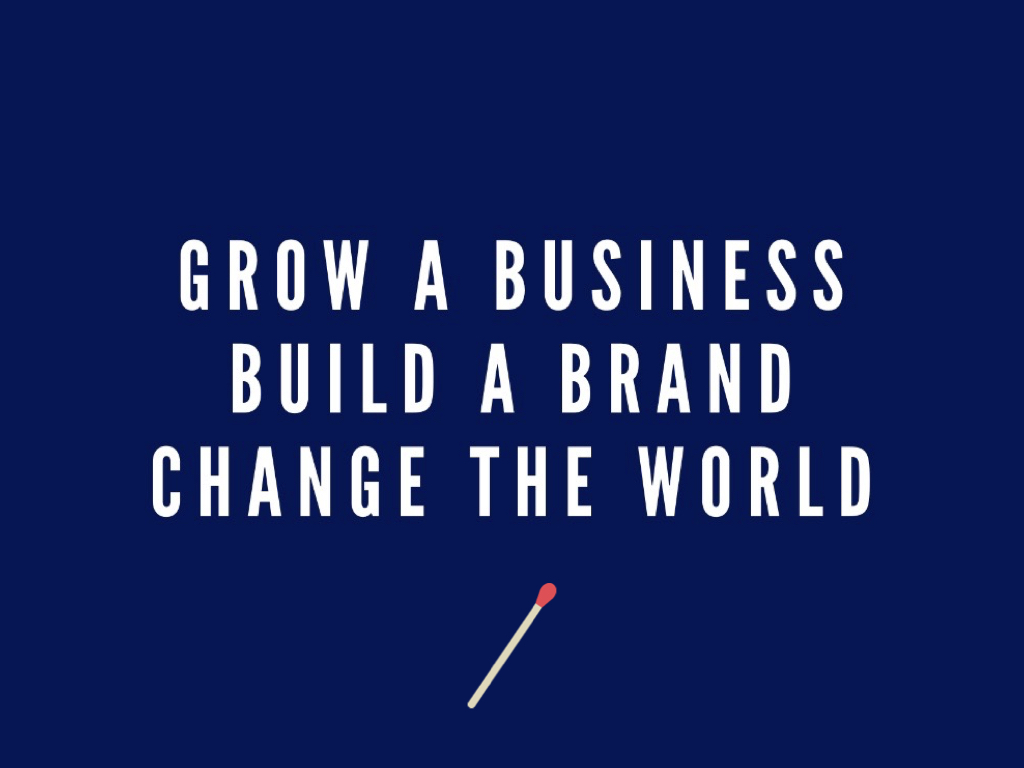
Let’s face it, we live in a world of behavior gone wrong.
Some see imminent apocalypse.
I see plenty of work for behavior change marketers and designers.
Opioid Crisis. Digital addiction. Inactivity. Unhealthy eating. Rising oceans. Uninspiring workplaces.
Pick your target. Go.
The problems that the world faces can only be solved with Behavior Change marketing and design. Growth and business success are behavior change marketing problems.
Growth problems can only be solved by behavioral solutions.
The process of behavior change marketing is simple. Determine the key performance indicators that support the growth theory for the business. Identify the behaviors that lead to those KPIs. Analyze the key behaviors along the customer journey, identifying gaps, drags and blocks.
Prioritize your design interventions. Describe the experience that will most likely transform behavior into habit for this brand.
Create experiences that will inspire action, informed by the vast store of behavioral science outcomes and deep direct response and interactive design testing experience.
Relentlessly test and optimize.
Grow a business. Build a brand. Change the world.
Let’s go, Behavior Change Marketer!
Learn more about Behavior Change Marketing by signing up for The Change Agent’s Cookbook for 2019: http://ow.ly/f1ms30nm1BL
By
James Nieman | 03/01/2019 | in
Netflix started out as a DVD rental business roughly two decades ago.
This past Sunday, the tech company was nominated for 14 Oscars.
They took home four.
Reminder: Netflix has been in original content for a mere six years.
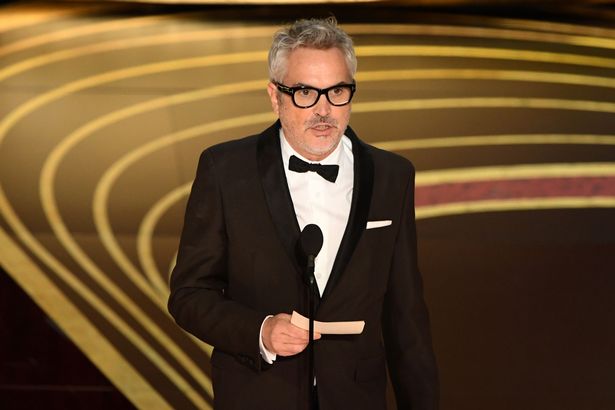 (Photo from Mirror)
(Photo from Mirror)
Their original film, Roma, was edged out by Green Book for Best Picture.
The loss was likely met with cheers from legacy studio heads and traditional media elite.
But the nomination speaks volumes for Netflix’s surging influence on the industry.
An influence that is only growing by the day.
Roma has Hollywood shaking in its suits.
A foreign black-and-white film, not likely to be greenlit by the major studios.
In theatres for just a few weeks before Netflix made it available for streaming online.
Much shorter than the 90-day exclusive window used by the old guard.
Roma had an A-list director in Alfonso Cuarón.
Putting Netflix’s power to secure Hollywood’s top talent on full display.
He would go on to win the Academy Award for Best Director.
Roma proved what many already knew to be true.
Netflix doesn’t just belong.
Netflix is the future, and it’s completely flipping the entertainment industry on its head.
Like a true challenger, they did it their own way.
The way of the master change agent.
With a direct-to-consumer business model, the user is the customer and the focus.
Not pleasing middlemen distributors or networks.
This model holds them accountable.
Cancelling a subscription is just one-click away.
Netflix knew the where was global.
Netflix knew the when was on-demand.
Netflix knew it was a membership-economy.
Which meant community and creating the right change for the people who care – their customers.
Netflix knew that content was king.
Lots of it.
Netflix knew that technology would bring these engaging stories to their audience.
And they knew the audience was everywhere – in their living rooms, on their laptops, or on their phones.
Netflix understood behavioral science.
Ease beats motivation.
Faster is better.
Netflix knew the power of experience and intervention design.
And revolutionized the way consumers watch television.
Giving them the freedom and control to binge entire seasons or watch at their convenience.
Netflix invented their own advantages.
By moving fast, and experimenting without the constraints of a legacy system.
Netflix is the reason Disney, WarnerMedia, CBS, and almost all of the other traditional media titans are now introducing their own direct-to-consumer business models, which will be costly.
For these Goliaths, the time is now, and the stakes are high.
Each of them will have to grow a new business.
While managing the decline of their traditional business.
But these mega corporations are now playing in a different marketplace.
One in which Netflix is the standard of greatness.
With smart data, savvy marketing, and 139 million strong.
Netflix has more than a head start.
The rest will play catch-up.
That little DVD rental business with nothing but a challenger mindset and an inspiring idea.
Is now both “what works” and “what’s great.”
An iconic brand that is defining an era.
That’s #inspiringaction.
By
Team DIGO | 02/07/2019 | in
When Affinity Federal Credit Union first came to us in 2014, the country was in economic disarray.
Following the second-worst financial crisis in U.S. history, seven million people had just lost their homes. More than that had just lost their jobs, and many lost both. Trust in financial institutions had plummeted by 50 percent, while trust in banks fell even more.
Still, the largest credit union headquartered in New Jersey needed new members, and quickly.
The challenge: Help Affinity grow in a post-recession economy where disillusionment with financial institutions was at an all-time high.
Together with our client, we needed to build an iconic brand, change behaviors, and inspire a new movement — and for a fraction of the cost of the marketing budgets of big banks on Wall Street.
We got started with a strategic exploratory of all the key messages that might help Affinity Federal Credit Union achieve its goals, and we found a key insight that did that far better than any other.
Affinity Federal Credit Union isn’t a bank.
You can, however, get a checking account, business loan or credit card there.
Our planning team talked to credit union members and discovered their desire to not see themselves as the victims or enablers of Wall Street. Instead, these members prided themselves on investing in their own community.
And unlike a bank, it had an inspiring idea above commercial intent — a not-for-profit public service mission that aimed to help people and small businesses.
We had our single thought …
“We’re not a bank, we’re Affinity”.
The creative message? All the financial services of a bank, but 100% Fat Cat free.
This was a brilliant example of reframing — positioning a company, a Credit Union, while at the same time de-positioning your competition. And it was based on a single compelling insight, which is way deep into our psyche: We consider all banks the same Fat Cat.
To really position the credit union apart from the bigwigs on Wall Street, Affinity needed to take this inspiring idea and dramatize it through a small number of iconic actions.
First, we created commercials that could never, ever have been done by any uptight bank.
Our major character was a real fat cat behind a desk. The response was so tremendous that the spot ended up catapulting Affinity to a national story and was featured on Spike TV’s Funniest Commercials of the Year — twice.
The campaign went viral on social networks, dramatically increasing the efficiency of the advertising. It was iconic.
Affinity Federal Credit Union – Fat Cats from DiMassimo Goldstein on Vimeo.
Next, to showcase Affinity’s low checking fees, we took the drama to an entirely new level.
Together with our client, we conducted a social experiment with real people, but one that took a turn for the extreme. We brought elite athletes and fat cat banking customers into the same gym.
Then, to demonstrate how commercial banks clobber their customers with enormous fees, we printed “ATM fees” and other fees on dodgeballs, blindfolded the customers and then let the athletes pelt them mercilessly. (Of course, our lawyers were present with ironclad releases and videotaped disclaimers.)
This insanely lopsided dodgeball game turned into a fully integrated campaign including digital banners, a landing page, and extra outtakes. Talk about an in-your-face advertisement …
It too went viral.
After a couple years, our client’s challenge had evolved.
We had helped Affinity successfully define who they weren’t — a fat-cat-run bank — but now, the credit union needed help defining who they were.
We looked deeper, conducting extensive primary research to learn all about what makes Affinity unique. We spoke with members, employees, stakeholders, and prospects and learned that Affinity members and employees feel proud to belong to something better. And that their tagline, “Belong to something better,” was the core of the brand. The message was authentic, and the sentiment was there, but the members weren’t embedded in the journey enough for this to be showcased to future members. All we needed to do was tell their story by bringing clear meaning to the tagline in a way that allowed every audience to relate to the brand. We needed to showcase the trustworthy human connections that make the Affinity experience so authentic, and who better to tell that story than the members themselves?
The new campaign, titled “A Community Connected,” was co-created with Affinity members. Through a series of regional OOH, display, radio, and TV spots, this innovative approach to advertising brought the brand’s mission to life in a transparent and iconic way. Using our patented Selfifesto® technique, we placed the members at the center of the marketing message and couldn’t be happier with the result. We asked members to record selfie videos detailing their inspiring experience with the credit union, and we worked to compile these videos into powerful ads.
The success wasn’t only measured in accounts and loans, but also by its ability to rally the brand’s employees under one flag. We helped throw a company picnic to celebrate them and build on the idea that they help make Affinity what it is. Our rebranding campaign brought the brand to life and educated audiences about what a credit union is, which is a huge barrier for the category. The campaign worked to tell Affinity’s story to prospects, members, and employees in a unifying way.
Affinity Federal Credit Union – A Community Connected from DiMassimo Goldstein on Vimeo.
The results? A campaign that drove down cost-per-acquisition while simultaneously increasing annual memberships.
During our partnership with Affinity, our client built a thriving community, helping bring the life-changing benefits of the credit union to more and more members each year.
By demonstrating the 10 Signs of an Inspiring Action Company, Affinity changed behaviors and got a new generation to open up accounts and form relationships with a credit union.
People want to be a part of an organization that has their interests at heart, and that’s exactly what Affinity is.
By
Team DIGO | 01/31/2019 | in

On the Season 2 finale of The A-List Podcast, host and DiMassimo Goldstein CCO Tom Christmann is joined in the studio by super freelancer and Adhouse NYC advertising teacher Paul Fix.
As a creative director, copywriter, and content creator, Fix has worked at many of the industry’s most renowned agencies, helping deliver world-famous campaigns such as Dos Equis’ “The Most Interesting Man.”
In the interview, Paul shares his unique journey into the world of advertising, talks about his class and teaching style, and offers valuable advice to any young creative trying to break it in the industry. Hear it all below!
Show Notes
- [0:00 – 1:25] Intro
- [1:26 – 15:30] Paul talks about the class he teaches at Adhouse and shares stories from his upbringing
- [15:31 – Paul talks about how his band was almost signed to a label, the importance of independence, and the moment he realized he wanted to be in advertising
- [26:45 – 44:30] Paul shares the story of how he broke into the industry by collecting data in media
- [44:31 – 1:02:19] Backpacking in Europe, becoming a high school English teacher, and going back to advertising school
- [1:02:20 – 1:05:00] Finally becoming a full-fledged creative at
- [1:05:01 – 1:17:15] The advantages of working freelance, the importance of being kind, and what he loves about teaching
- [1:17:16 – 1:18:46] Outro
“The A-List” is a podcast produced by DiMassimo Goldstein, an inspiring action agency, recorded at the Gramercy Post, and sponsored by the Adhouse Advertising School, New York’s newest, smallest, and hippest ad school. You can subscribe and rate the show on iTunes or listen along on SoundCloud. For updates on upcoming episodes and guests, be sure to like the A-List Podcast on Facebook and follow host Tom Christmann on Twitter.
By
Team DIGO | 01/18/2019 | in
When Weight Watchers first came to us in the spring of 2015, the brand was in an alarming state…
The previous months had been some of the worst in the iconic company’s history, with substantial dips in subscriptions, sign-ups, and revenue, leading to the stock plummeting from $25 to $7 per share.
At the same time, the category was facing fierce and unfamiliar competition in the form of wearable tech, free fitness and calorie counting apps, and niche diets that were sweeping the internet. The consumer was now living in a choice-filled world, which led to powerful defenses. Inaction is exacerbated by the unprecedented level of emotional distance and skepticism that people are feeling, primarily because they are overwhelmed.
The conversation shifted, and no one was talking about Weight Watchers. With the brand on the “brink of irrelevance,” they needed more than just an agency – they needed an ally.
That’s when they came to us to inspire action.
The client couldn’t afford to be patient. Like any true change agent, our client couldn’t sacrifice brand for revenue or revenue for brand – they needed both, and urgently.
The challenge: refresh the brand to drive both recruitment and brand value.
The timeline? One month.
30 days to diagnose the previous failed strategy, create and choose offers, plan channels, agree on a brief, conceive and write scripts and concepts, and then produce, launch and traffic two television commercials and a digital campaign.
We accepted the challenge, and with confidence. From our work with Reader’s Digest, Netflix, eBay, Fresh Direct, and many others, we knew subscription-model businesses. We knew the health and wellness category. We knew the immense pressure and responsibility our client felt. We knew we could help.
Executing a process that most agencies require four to six months to complete in just 30 days would require all hands on deck and inspiring collaboration with our client. With both teams excited by the new partnership and the challenge ahead, we immediately went to work.
There are two ways that we can change behavior: by increasing motivation and by making it easier for our audience to take action.
Weight loss is one of the toughest behavioral challenges of our times. Sometimes people might be very motivated to lose weight, but lack the skills to do it. They don’t know how to do it, and the environment does not make it easy for people to lose weight. Life gets in their way.
To overcome these challenges, Weight Watchers needed to hit both, motivation and ease.
With our first campaign, we tapped into people’s natural desire to change by modeling behavioral change. People learn new ways of behaving by watching others. Modeling can be very powerful when it creates a new social norm. And there’s generally a tipping point when not participating in the action becomes the odd behavior.
In a four-week sprint, and with our client involved at every step, we conceived, developed, and went to market with a winning campaign that focused on the brand’s secret ingredient – its members – while highlighting the special offer of a free starter kit to increase ease.
The starter kit was a key. Everyone’s journey to weight loss is unique, but almost always, making the commitment to start is the hardest part. Most diets only last a few days because results don’t happen overnight.
With a free starter kit, the consumer now had something tangible to symbolize this new chapter of transformation. It gave them the tools they needed to succeed, and made them feel confident they could stay the course. It was a constant reminder of the empowering path they were on.
Weight Watchers – Knockin’ Em Down from DiMassimo Goldstein on Vimeo.
The campaign generated excitement and restored consumers’ motivation to act, leading to the first up quarter of recruitment in years. The stock price went back up, and for the first time in a while, the future was hopeful. Still, our work was far from finished.
In 2016, our brand planners helped us strategically prepare to launch a campaign around Weight Watchers’ new program, SmartPoints, one of the brand’s biggest innovations in 50 years.
Understanding the human behaviors that would ultimately drive action, our client doubled down on our consumer-centric approach and engaged the members like never before. We worked with Weight Watchers to cast real members talking about their experiences, capturing the values of the brand and its audience at the same time.
New signups surged, with increases in subscribers, meeting attendees, and an immediate 5% North American revenue lift.
With a new program in place, our client had something others didn’t – real results with real people.
Our Fall 2016 sprint started with a happier problem; Members were losing 15% more weight on beyond the scale.
How could our client get the news out in a way that would get noticed? Once again, the client inspired action, reaching out to real members and super fans. But this time, through Weight Watchers’ own app, Connect, which has been called the most positive social network on earth.
We asked members to film themselves telling us their success stories and living the program. A technique we’ve dubbed, the Selfifesto®.
Weight Watchers – It Worked :30 from DiMassimo Goldstein on Vimeo.
And like the program, the campaign worked, inspiring the audiences to act in ways that benefit them.
During our over three-year partnership with Weight Watchers, our client achieved 10 consecutive quarters of recruitment growth. The stock grew from $7 to $107 per share, and Weight Watchers reached its highest marketing efficiency since 2008.
Together, we helped revitalize the brand, breaking down the barriers to motivation to gain over 1 million new members a year. We increased their commitment, made the path easy, and helped them each make more inspiring decisions and form more empowering habits.
That’s the master change agent way. That’s inspiring action.
By
James Nieman | 01/11/2019 | in
You are a change agent.
You want to create the right change for the people who care — your customers.
You want to inspire action, and now.
As you know, not everyone is a change agent.
And most agencies are not for the change agents.
They compromise speed to meet their own staffing needs.
They compromise outside-the-box thinking to fit their budget.
They compromise selling more and building the brand to play in their own sandbox.
The problem is that your customer doesn’t want to be compromised.
And doesn’t care if you are,
Let’s say “No” to compromise.
I’m Mark DiMassimo, and I’ve spent my entire career learning from change agents.
Iconic, visionary entrepreneurs — the ultimate change agents — have been my continuing education.
I’ve studied them up close by working with them, day in and day out.
I earn my place by helping those change agents grow their businesses while growing their brands.
This is all I want to do with my career:
Learn from the best. Use that learning to drive growth and value for myself and others.
Give it away to inspire more people to live the creativity, freedom and accomplishment of the change agent life.
Most of my work time is spent trying to keep up with and inspire these iconic change agents.
Through the years, when I could, I took some time to write down what I’d learned from them.
The Change Agent’s Cookbook became one of the most successful email thought leadership campaigns ever.
It led to several billion dollars in sales, inspired founders of new categories and brought together change agents.
My team is putting together some of the greatest hits of the series in e-book and pdf format and calling it The Change Agents Cookbook: How Great Entrepreneurs Use Creative Destruction To Inspire Action.
This isn’t a marketing funnel. You don’t need to give your email to get this book. It’s free to download, and I hope you’ll find it inspires you as others have.
If you use it to ignite the intersection of business and creativity, I’ll be happy.
Let’s say “No” to compromise. Let’s inspire greatness.











